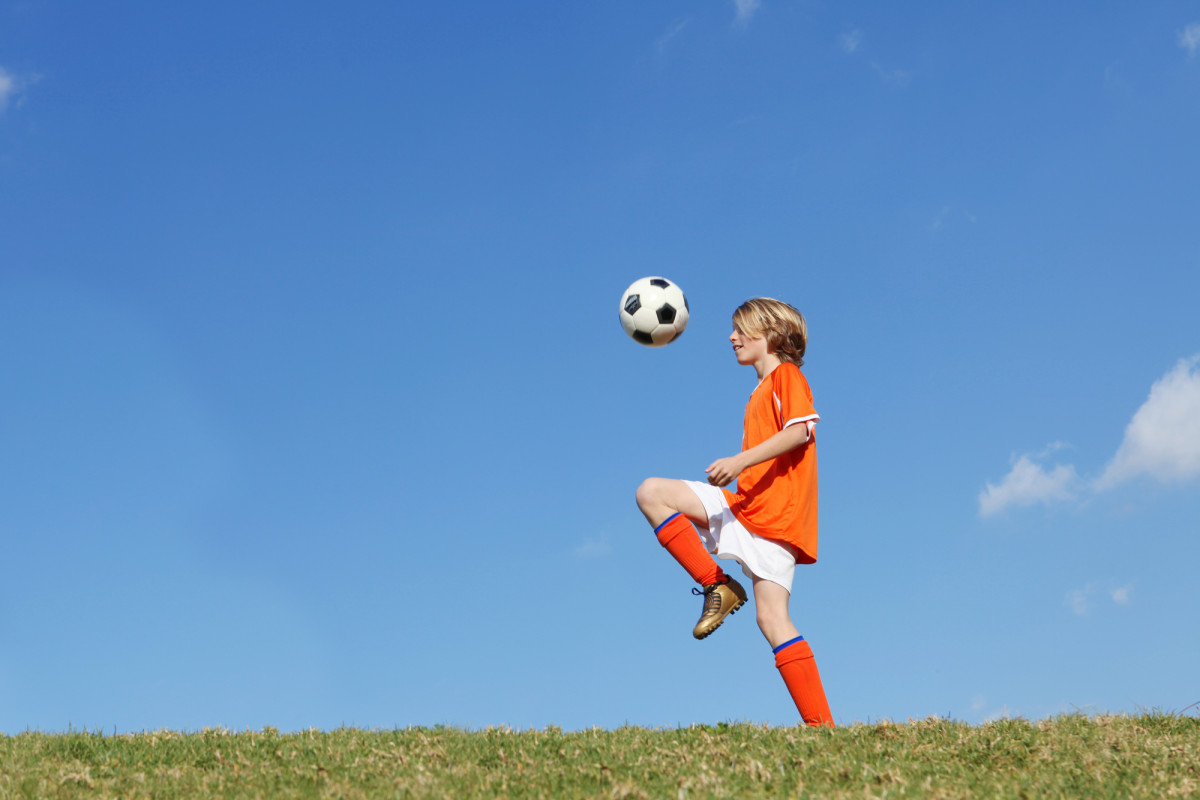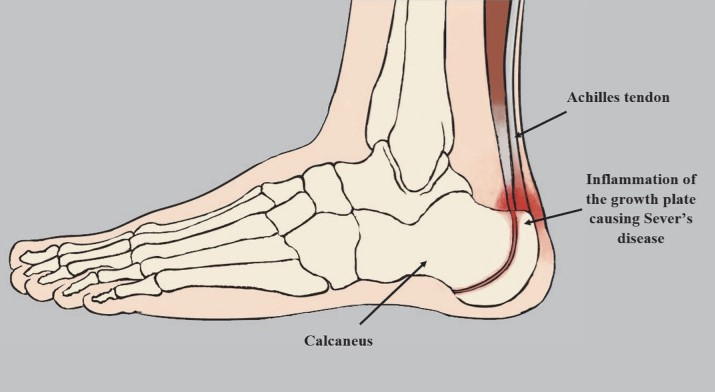
Heel pain in children active in sports is very common. A recent study showed that 87% of young athletes that had heel pain were active in running or jumping sports.1
Children with Sever’s disease will commonly present with sharp heel pain and tenderness that is aggravated by physical activity.1 It most commonly occurs in children 7-9 years old undergoing growth spurts and boys are 2-3 times more likely than girls to suffer from Sever’s disease.2
What is Sever’s disease?
Sever’s disease, or calcaneal apophysitis, is a painful inflammatory condition of the Achilles tendon connection to the heel bone.2 It is caused by repetitive microtrauma and pulling of the tendon at the open growth plate area in the heel bone.2 The main concept explaining why growing children are more susceptible to Sever’s disease is that bones grow more rapidly than tendons and this can place significantly increased levels of stress on the tendon attachment.3 In addition, the open growth plate is considered the weakest part of the muscle to bone to tendon attachment leading to further likely irritation.1
How do I know if my child has Sever’s disease?
Things to look for in your child:
- Heel pain and tenderness that is worsened during physical activity
- Your child can’t recall a specific injury that is causing their pain
- Focal pain at the back of the heel just below the Achilles
- Lack of redness or swelling at the painful area
- Limited ability to stretch the Achilles or calf
- Symptoms on one side or both
- Your child has an adjusted walking pattern including: toe walking or with a limp
- Avoidance of putting weight onto the affected foot
Risk factors of Sever’s Disease may include:
- Sports with high physical demands especially with repetitive running and jumping (soccer, netball, basketball etc.)
- Calf or Achilles tightness prior to symptoms
- Weak musculature around ankle
- Poor footwear including: reduced cushioning or worn out shoes
- Playing on hard surfaces
- Anatomical deviations including: “bow legs”, “flat feet” or very high arches
- Being overweight
It is always best to have an examination by an experienced physiotherapist to perform a thorough assessment to identify Sever’s and treat the condition.
How can a physiotherapist help?
Your physiotherapist can perform a thorough clinical investigation, including a comprehensive interview and physical examination to appropriately identify the cause of your child’s heel pain. After confirming the source of the injury and the associated impairments, conservative physiotherapy treatment options normally consist of:
- Guidance to adjust current training regimens to allow proper tissue healing
- Reducing pain through a variety of modalities
- Exercises and strengthening to address muscle imbalances and biomechanical abnormalities that have contributed to the injury
- Progression of sporting activity while the tissue heals to restore normal function in the lower limb
- Providing custom orthotics, heel lifts, strapping or kinesiotaping to aid in reducing pain, restoring function and improving biomechanics
- Identifying the appropriate time to successfully return to sport to avoid reinjuring the area
- Providing education to parents, coaches and the child on how to maintain strength levels and strategies to prevent re-irritation and to self-manage symptoms
Sever’s disease usually resolves well with the correct treatment and rarely causes any long-term issues. Seeking out an experienced physiotherapist can facilitate an improved outcome for your child and to help get them back in the game as quickly and safely as possible.

References
- Fares MY, Salhab HA, Khachfe HH, Fares J, Haidar R, Musharrafieh U. Sever’s Disease of the Pediatric Population: Clinical, Pathologic, and Therapeutic Considerations. Clin Med Res. 2021 Sep;19(3):132-137.
- James AM, Williams CM, Haines TP. Effectiveness of interventions in reducing pain and maintaining physical activity in children and adolescents with calcaneal apophysitis (Sever’s disease): a systematic review. Journal of Foot and Ankle Research. 2013 Dec 1;6(1):16.








